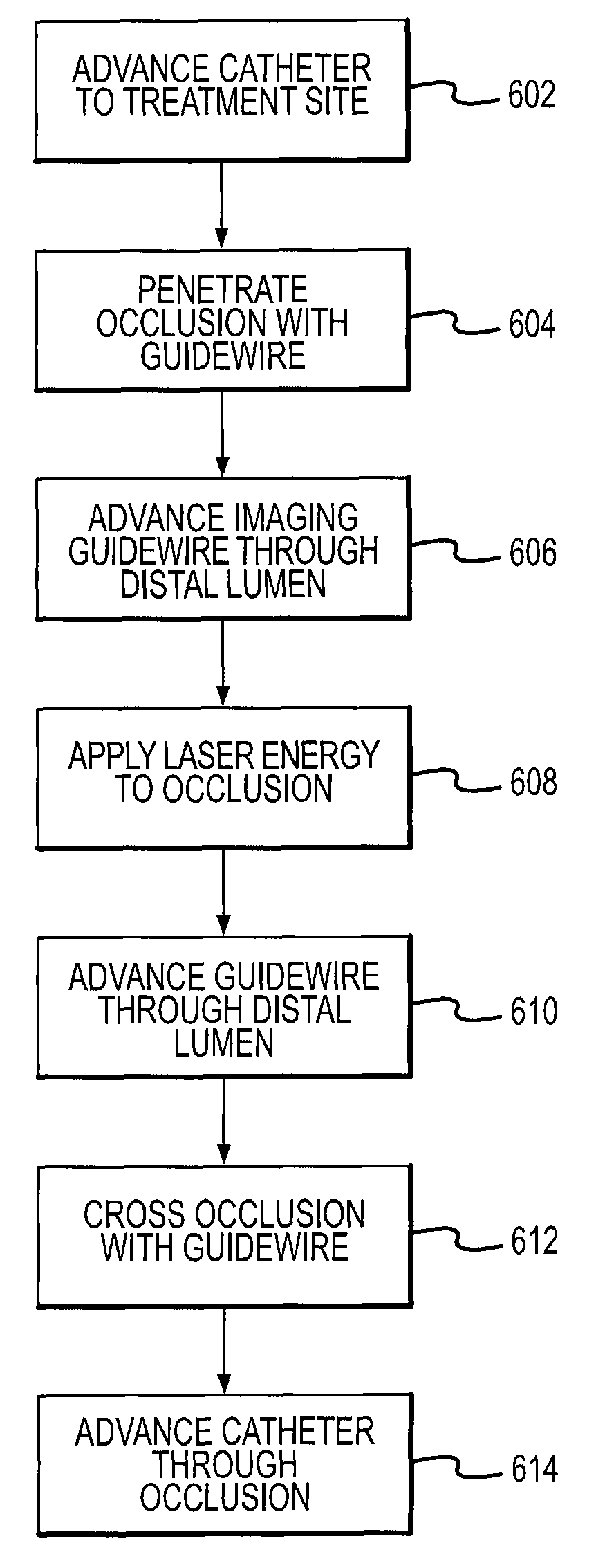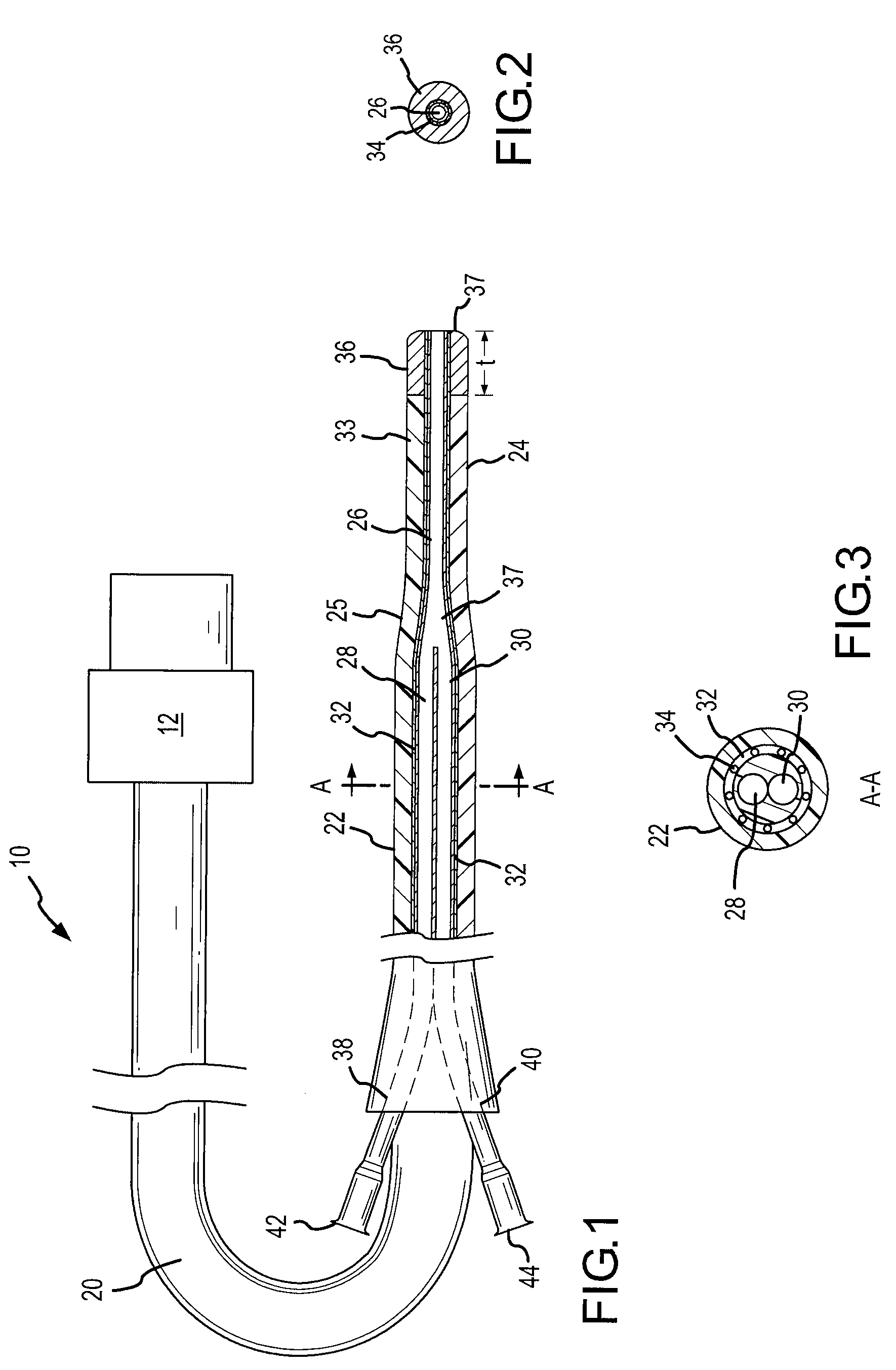Multi-port light delivery catheter and methods for the use thereof
a light-emitting catheter and multi-port technology, applied in the field of multi-port light-emitting catheters, can solve the problems of difficult penetration, stroke, other neurological problems, and a class of occlusions known as chronic total occlusions (ctos) have been treated less successfully
- Summary
- Abstract
- Description
- Claims
- Application Information
AI Technical Summary
Benefits of technology
Problems solved by technology
Method used
Image
Examples
Embodiment Construction
[0028]Catheter assemblies, systems and procedures described are designed for crossing intravascular occlusions, including chronic total occlusions (CTOs) that are difficult to penetrate and completely block fluid flow through a vessel. The occlusion is crossed when the guidewire or catheter is moved past the blockage and within the distal lumen of the vessel. This may be accomplished by the rapid exchange of therapeutic (e.g., penetration) and diagnostic devices through the distal end of the catheter that allow a physician to safely navigate a penetrating guidewire or catheter through the occlusion. For example, a procedure may include advancing a penetrating guidewire a safe distance into a CTO before retracting it to a proximal section of the catheter. A diagnostic device (e.g., a optical or ultrasound imaging guidewire) is then advanced through the distal tip of the catheter to allow the physician to know the length and direction of the catheter advancement. The physician may the...
PUM
 Login to View More
Login to View More Abstract
Description
Claims
Application Information
 Login to View More
Login to View More - R&D
- Intellectual Property
- Life Sciences
- Materials
- Tech Scout
- Unparalleled Data Quality
- Higher Quality Content
- 60% Fewer Hallucinations
Browse by: Latest US Patents, China's latest patents, Technical Efficacy Thesaurus, Application Domain, Technology Topic, Popular Technical Reports.
© 2025 PatSnap. All rights reserved.Legal|Privacy policy|Modern Slavery Act Transparency Statement|Sitemap|About US| Contact US: help@patsnap.com



